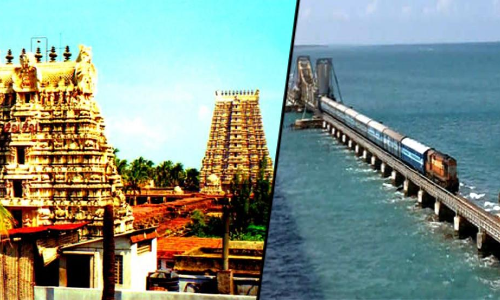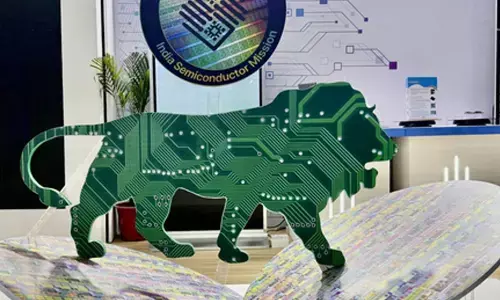In the footsteps of lord rama lets explore the trip down rameshwaram!

Today we take you a trip down to Rameshwaram to enjoy the sun and the sea and to become reacquainted with the age old myths and legends.
Today we take you a trip down to Rameshwaram to enjoy the sun and the sea and to become reacquainted with the age old myths and legends.
A slight drizzle does not bother me, I am enjoying the sensation of my feet digging into the soft white sand as I stand at the breathtaking shores of the sacred site where the Indian Ocean meets the Bay of Bengal. Called Dhansushkodi, this is the south eastern tip of pamban island in Tamil Nadu, about 29km west of Talaimannar in Srilanka. Iam on a trip to see the enchanted land of Rameshwaram where every drop of water, every corner and every stone tells a story....legends that mark various episodes mentioned in Valmiki’s Ramayana.
According to Hindu scriptures, on the request of vibhishana, brother of Ravana, Lord of Rama broke the sethu with his bow and hence the name, Dhanushkodi. Dhanush means bow and kodi stands for end. Interestingly, swami vivekananda visited Dhanushkodi on his return from the parliament of religions held in the US in September 1893. This island is where he set foot on Indian soil after travelling from Colombo in January 1897.
Sadly, most of Dhanushkodi was destroyed by a cyclone in 1964. In those days, Dhanushkodi had a railway station, a small railway hospital, a school, and even a post office. One can see ruins of these at the site. As I walk through the ruins, my escort from the hotel points out rail track that lies half buried in the soil, which once ferried passengers between Dhanushkodi and Rameshwaram. The land that flourished in the past today has only a few fishermen living in the thatched huts during the fishing season as this belt is supposed to be one of the richest fishing belts in India.
Walking past the dwellings, the roads lead you to the Kothandaramaswamy temple at the southernmost tip of the island. The only historical structure to survive the 1964 cyclone, the main deity here is of Lord Rama, depicted as having a bow ( Kothandam) and hence the name kothandaramaswamy. It is also said that Rama performed the pattabishekam at this shrine.
RAMANATHA SWAMY TEMPLE
Next on my itinerary was the most important and main shrine of Rameshwaram Ramantha Swamy Temple which has one of the twelve jyothitlingams of shiva.
The story of the temple dates back to the time when the war in Lanka was over and Rama decides to perform yagna for Lord shiva. It is said that at this site, an avatar of Lord Vishnu worshipped Lord shiva. The temple stands in the sites of the anteyshti abd prayaschittayagnas of Rama. There are twenty holy teetham or tanks and wells within the temple precinct where piling rims have the choice of bathing before performing puja. Here shiva is Ramanatha, the Lord of Rama.
I walk in the corridors of the temple, totally in awe admiring the classic Dravidian architecture and the longest temple corridor in India with 1212 pillars carved with exquisite images.
NAVABASHANAM
Navagraha temple Devipattanam
Seventy kilometres from Rameshwaram towards a coastal village, is a temple dedicated to the Devi who is said to have killed the fearsome demon Mahishasura at this site. According to the legend, lord Rama calmed the sea by installing nine stones representing the Navagrahas. I thoroughly enjoyed walking up to the stones that are partly submerged in the water close to the beach near a designated bathing area of the Navagraha Temple. The other story goes that Rama worshipped Goddess Durga here and she asked him to worship the nine sacred planets to gain good fortune.
As there was no temple for the planets, Rama placed nine stones upright in the shallow bay and worshipped them, hence the name of site Navabhashanam, the nine sacred stones.
VILUNDI TEERTHA, TANGA CHIMADAM
I’d heard about a well which Rama had created and I was keen to visit the site. According to legend, after their return to Rameshwaram from Lanka, Sita fell thirsty and Rama create a sweet water spring here by aiming ah arrow towards the earth. They well is now located in the sea but still has sweet water.














